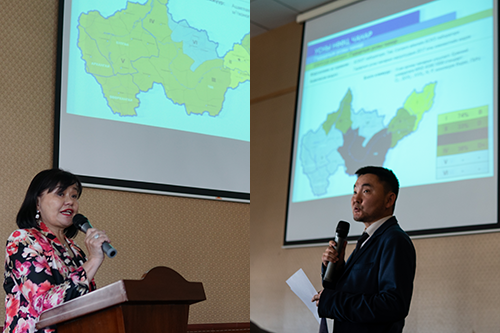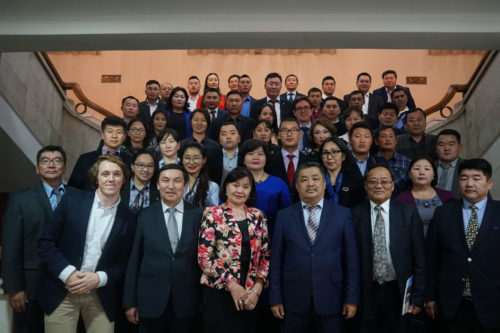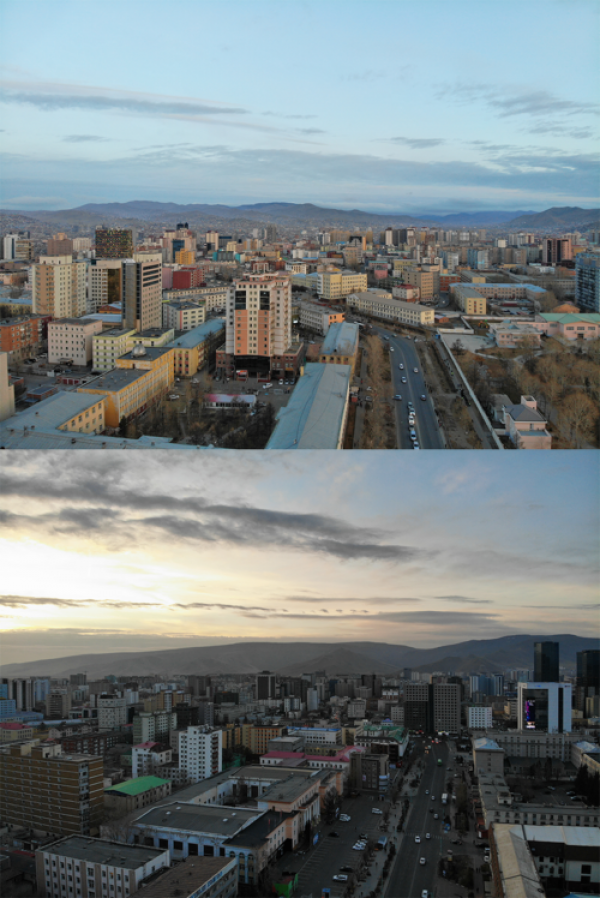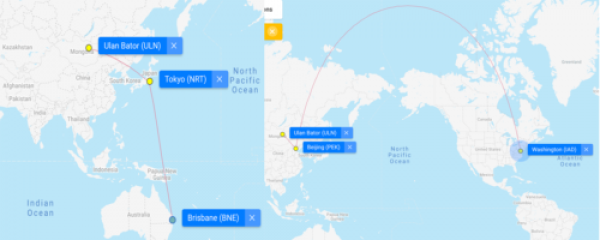Stakeholder workshop bring locals one step closer to a report card for the Tuul River Basin
Dylan Taillie ·On October 28th, 2018 Simon Costanzo and I arrived in Ulaanbaatar, the capital city of Mongolia, for the beginning of a busy week of workshops and trainings. Healthy Rivers for All (a collaborative effort between the UMCES Integration and Application Network and the World Wildlife Fund) has been facilitating the creation of a river basin health report card for the Tuul River Basin, the major river running through the capital of Mongolia. Healthy Rivers for All has many, varied goals but one major objective is to better understand the health rivers throughout the world, and communicate the threats to their health. This is intended to spur science-based management and informed planning for improved river health. Read more about the project here.
The timing of this trip is about 18 months after Simon and Bill’s first trip to the country, when they trained local leaders on report card creation techniques and strategies. Their first trip helped local partners at WWF Mongolia and the Tuul River Basin Authority to understand the report card process and provide them with the tools required to facilitate the creation of a Tuul River Basin Report Card. The second trip was almost exactly a year ago, and in this workshop local leaders brought together stakeholders to identify indicators for use in the grading of the Tuul River Basin. A short video about this workshop and some of its outcomes can be found here.
The purpose of the workshop last week was to present the preliminary results of the Tuul River report card to stakeholders, and obtain their input on the scoring methodology and preliminary scores. This is sort of a “gut check” on how the scoring of the River Basin is progressing, and a chance for stakeholders from all parts and sectors of the basin to voice their opinions. In the morning, our partners from the Tuul River Basin Authority presented preliminary results with plenty of time for questions and comments from stakeholders.

During the afternoon, stakeholders formed discussion groups to further investigate the preliminary health scores and methods, and also to consider some of the management implications and outcomes of the report card. Stakeholders revised indicator scoring and also requested some indicators be dropped as there was not enough data for them to be useful or they were encompassed within a different indicator. Group discussions like this allow stakeholders from different walks to openly express their opinion and point of view on issues surrounding Tuul River Basin health. In many places we find different groups like this don’t often sit at the table together, even though they may have very similar values and interests, and the outcomes of simply bringing them together in the same room is a huge benefit of the process of report card development.

The single-day stakeholder workshop concluded a success, with many clear goals moving forward and a tentative release date of late March 2019. Local partners found the bringing together of unique and varied voices to be incredibly useful in the refining and polishing of the report card, and look forward to presenting a finalized version to decision makers and managers in 2019.

Side note: Read about the city of Uulanbaatar and an overview of the characteristics of the Tuul River Basin in Bill Dennison’s blog, ‘Environmental Literacy of the Tuul River, Mongolia’, here. As Bill didn’t cover this, I wanted to mention: flying to Mongolia is not an easy task. Even if you live in the same hemisphere (as Simon does), it can take close to 15 hours and leave you quite exhausted. For me it was about a full day of travel time and 12 hours of time difference from Eastern Standard Time. It is, however, a very interesting flight. Below are Simon’s route and mine to the capital city, and a few small photos from my plane going over the top of the world.


About the author
Dylan Taillie

Dylan is a Science Communicator with IAN. He has experience in various areas of visual information, science communication and technical analyses. Strengths in data management, environmental assessment and stakeholder engagement. He has worked with IAN in various positions since 2016 and enjoys fishing and hiking.

